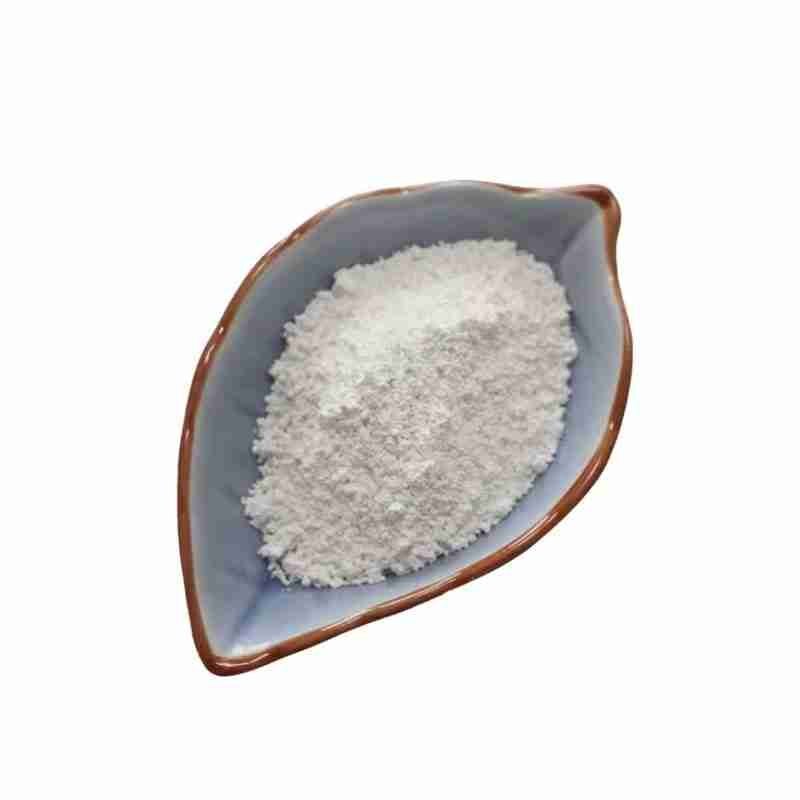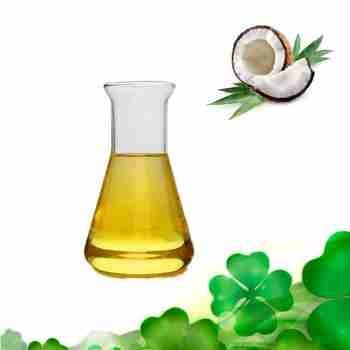Dodecyl Dimethyl Benzyl Ammonium Chloride CAS #122-19-0
Stearic dimethyl benzyl ammonium chloride is a white solid or viscous liquid with slight odor.
Synthesis of benzyl dimethyl stearyl ammonium chloride: put 450kg dimethyl octadecylamine into a reactor, heat it to 80~85 ??, and slowly add 180kg benzyl chloride within 1.5~2h under stirring. The temperature shall be kept at 80~90 ?? during the dropping process. After dosing, temperature rise to 100~105 ??, keep the reaction for several hours, and take samples to determine the pH value. When the pH value of 1% aqueous solution reaches 6~6.5, the reaction is completed. Lower the temperature to 60 ?? and discharge to obtain benzyl dimethyl stearyl ammonium chloride.
发送询盘
Dodecyl Dimethyl Benzyl Ammonium Chloride CAS #122-19-0
| Benzyldimethylstearylammonium Chloride Basic information |
| Product Name: | Benzyldimethylstearylammonium Chloride |
| Synonyms: | stedbac;tallowbenzyldimethylammoniumchloride;tritoncg400;tritoncg500;tritonx-40;tritonx-400;varisoftsdc;dimethyl octadecyl benzylamonium chloride |
| CAS: | 122-19-0 |
| MF: | C27H50ClN |
| MW: | 424.15 |
| EINECS: | 204-527-9 |
| Product Categories: | Aromatics;Intermediates & Fine Chemicals;Isotope Labelled Compounds;Pharmaceuticals;API Intermediate;Ammonium Chlorides (Quaternary);Aromatic Quaternary Ammonium Salts (Surfactants);Cationic Surfactants;Functional Materials;Quaternary Ammonium Compounds;Surfactants;Hair Care;Home Care |
| Mol File: | 122-19-0.mol |
 |
|
| Benzyldimethylstearylammonium Chloride Chemical Properties |
| Melting point | 54-56??C |
| density | 0.98 |
| vapor pressure | 0Pa at 25?? |
| storage temp. | Inert atmosphere,Room Temperature |
| solubility | Chloroform (Slightly), DMSO (Slightly), Methanol (Slightly) |
| form | Solid |
| color | White to Off-White |
| Odor | at 100.00?%. bland |
| Water Solubility | 4000 G/L (20 oC) |
| LogP | 3.89 at 20?? |
| CAS DataBase Reference | 122-19-0(CAS DataBase Reference) |
| EPA Substance Registry System | Dimethyl octadecyl benzyl ammonium chloride (122-19-0) |
| Safety Information |
| Hazard Codes | C,N |
| Risk Statements | 22-38-41-50-34-21/22 |
| Safety Statements | 26-36/37/39-61-45 |
| RTECS | BO7000000 |
| HS Code | 29239000 |
| Hazardous Substances Data | 122-19-0(Hazardous Substances Data) |
| Toxicity | LD50 oral in rat: 1250mg/kg |
- 2
- 2-diallylpent-4-en-1-amine
- 4
- 95-16-9
- Ammonium sulfamate
- Benzothiazole
- cas:67889-00-3ح2
- cas:83524-75-8 | pigment black 32
- cas:928836-00-4 | 2
- cas:932745-70-5 | 4
- Chemical Minerals
- Coconut diethanolamide
- Daily Chemicals
- discount
- for sale
- General pvc resin
- hexyl D-glucoside
- in stock
- Lauramidopropyl betaine
- LAURIC ACID MONOETHANOLAMIDE
- Petroleum Additives
- Plasticiser
- Ploymers
- price
- PVC
- quotation
- Raw Materal
- Remove term: Petroleum Additives Petroleum Additive
- SODIUM ETHYL 2-SULFOLAURATE
Related Products
Lauryl Glucoside is an eco-conscious non-ionic surfactant, derived from sustainable lauric acid and glucose. It offers superior mildness and biodegradability, making it an ideal choice for formulating gentle and effective cleaning agents in personal care and household products. Its bio-based nature aligns with the growing demand for green chemistry solutions.
Coconut diethanolamide is a derivative of coconut fatty acids, where the fatty acid is reacted with diethanolamine to form an amide. This compound is commonly used as an emulsifier and viscosity modifier in personal care products such as shampoos, conditioners, and creams. It imparts a smooth texture and enhances the stability of formulations. Coconut diethanolamide is valued for its ability to improve the foaming properties and skin feel of products, making it a preferred ingredient for creating luxurious and effective formulations in the cosmetics and personal care industry.
Product name:HYDROXYPROPYL GUAR HYDROXYPROPYLTRIMONIUM CHLORIDE
Purity:99%
Appearance:Light Yellow Powder
Package:Customized according to customer needs.
Sample:Available
Common English name: 5-iodo-2,3-dihydropyridazin-3-one
CAS No.: 825633-94-1
Molecular formula: C4H3IN2O
Molecular weight: 221.98
Sample: Available
Chemical Name: UV-120
Other Name: (2’,4’-Di-tert-butylphenyl 3,5-di-tert-butyl-4-hydroxybenzoate)
CAS No.: 4221-80-1
Molecular Fomula: C29H42O3
Molecular weight: 438.66
Assay: ≥99%(LC)
Product name:Cyclopentane
Purity:96%
Appearance:White powder
Package:25kg/bag
Sample:Available
Chemical Name: STODDARD SOLVENT
CAS No.: 64742-88-7
Appearance: Colorless or Light Yellow Liquid
Sodium Ethyl 2-Sulfolaurate is a surfactant with a unique combination of properties. It is an anionic compound, derived from the sulfonation of ethyl laurate, which is then neutralized with sodium hydroxide. This results in a product that is highly effective in lowering the surface tension of water, making it an excellent wetting agent and emulsifier. It is commonly used in personal care products, detergents, and industrial applications for its foaming and dispersing capabilities. As a mild and biodegradable ingredient, it is favored for its environmental and skin-friendly attributes, ensuring safety and performance in a variety of formulations.
Decyl Glucoside is an eco-friendly, non-ionic surfactant derived from renewable resources. Renowned for its mildness and biodegradability, it is ideal for creating gentle, high-performing cleaning agents in personal care and household products. Its sustainable and effective nature makes it a preferred choice for green formulations.
Monostearin is a versatile emulsifier and emollient derived from glycerol and stearic acid. It is instrumental in stabilizing emulsions and enhancing the texture and consistency of a wide range of products in the cosmetics, food, and pharmaceutical sectors.
Lauramidopropyl betaine is a mild, biodegradable surfactant commonly used in personal care products and cleaning formulations. It is derived from coconut oil and is known for its foaming and wetting properties, making it ideal for creating rich lathers. This ingredient is particularly favored for its gentleness on the skin and its ability to cleanse without causing irritation, making it suitable for sensitive skin types. It also contributes to the product’s viscosity and stability.
Chemical Name: Potassium Castorate
CAS No.: 8013-05-6
Molecular Formula: C57H107K3O12
Molecular Weight: 1101.74718
Appearance: Yellow Liquid


















